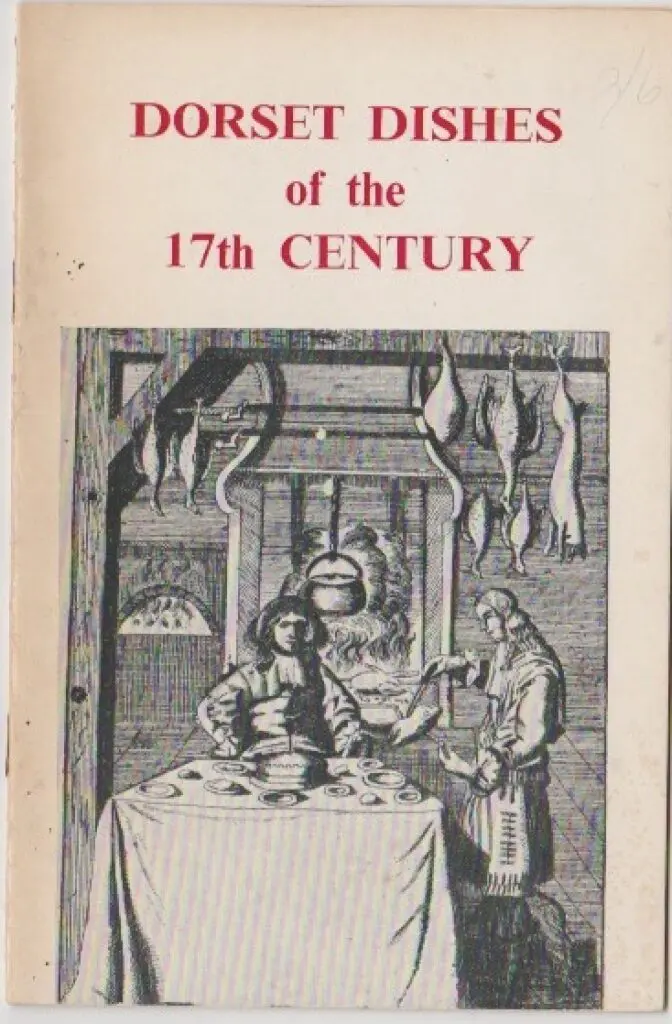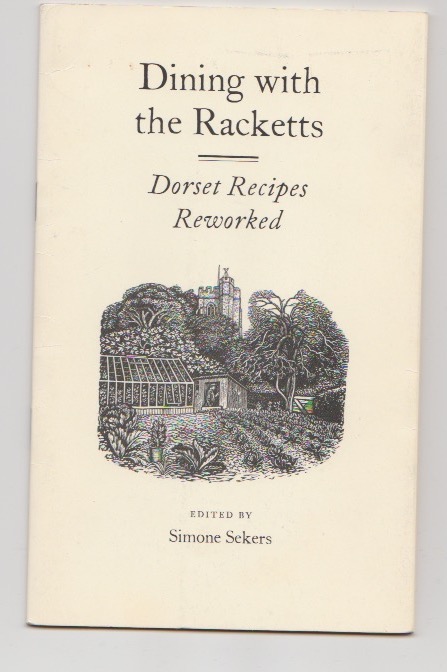The alchemy of cookery with a 17th century adventurer and the secrets of some old Dorset kitchens – Fanny Charles

Image: National Trust /Georgie Long and
Emma Lansbury
Fifty years ago there wasn’t much interest in the history of food – a few specialists researched the diet and cooking methods of our ancestors, but there was little available for the general reader or domestic cook. Nowadays, as fans of BBC Radio 4’s delicious Kitchen Cabinet know, food historians are frequent broadcasters and popular authors, feeding a growing appetite to understand more about the ingredients, cooking equipment and dietary health of past centuries.
Chefs and domestic cooks enjoy exploring historic recipes and hunting down the sort of ingredients that our great-grandparents would have used. Reconnecting with the food of our past is a way of reaching back to our forebears. It can also offer more healthy eating – don’t forget American food campaigner Michael Pollan’s famous quote: ‘Don’t eat anything your great-great grandmother wouldn’t recognise as food’.
It is, of course, naive to suppose that our ancestors only ever ate delicious, local, seasonal food – which is so often glorified as simple peasant food. We don’t have any traditions like Italy’s cucina povera, which has been made fashionable by top Italian chefs including Mario Batali and Cesare Casella (in whose skilled hands, of course, it is anything but ‘povera’.)
But we do have strong traditions, including herbs and spices, baking and roasting.
The collection of a 17th century diplomat and adventurer, in the library of one of Dorset’s great houses, reveals the diversity of ingredients and the importance of taste in the diet of Restoration England.
Any food history will always feature lavish descriptions of Tudor feasts, vast banquets in pre-Revolutionary France or the sheer, astonishing amount of food consumed at a grand Victorian dinner or a shooting breakfast with the future Edward VII.
The truth is that the rich, particularly in the 18th and 19th century, ate very well (albeit often with too much sugar), while the poor ate … what they could gather from the hedgerows or grow, if they were lucky enough to have a little patch of garden. George Mitchell, who lived on the estate of the Phelips family of the Elizabethan mansion, Montacute House, in the Somerset village near Yeovil, wrote The Skeletons at the Plough 1827-1846. It makes for grim reading:
“Our food consisted principally of a little barley-cake, potatoes, salt, tea kettle broth and barley ‘flipped.’ Tea kettle broth consisted of a few pieces of bread soaked in hot water with a little salt, sometimes with a leek chopped up in it. … Barley flipped was made by sprinkling barley-meal into a pot of boiling water which when sufficiently thickened was served up with salt and a little treacle. Sometimes I would pull a turnip from the field and gnaw it to prevent hunger … and many a time have I hunted and foraged about for snails in the hedges and roasted them for my lunch and tea.” *
Dishes from Dorset kitchens
In the late 1950s and early 60s, antiquarian, book-seller and polymath James Stevens Cox was living in Beaminster and began to gather recipe collections from some of the old country families and manor houses in the area. He published two booklets, both from his Toucan Press at Beaminster – Dorset Dishes of the 17th Century (1967), and Dorset Dishes of the 18th Century (1961). The 18th century collection, which is simply described as “from Dorset inhabitants” – including Lady Trenchard, Judith Frampton, the Bragge family and Tyneham House – includes almond flummery, Hog’s Pudding (still a local delicacy in Cornwall), ‘a pasty of beef or mutton as good as venison … snail water … mackerooms … quaking pudding and jugged hare.’
Some of these names are still familiar, although jugged hare is rarely eaten now and snail water doesn’t much appeal!
The recipes in the 17th century collection come from two Dorset families, the Lyfords and the Bragges. Mary Lyford’s Receipt Book covers the period from around 1650 to 1690. After a rather dramatic start in life – she was rescued as a baby from a burning house – she settled down to domesticity, making such dishes as macaroons, “harty chock pie” [artichoke], piping [a form of pippin] marmalade, custard, fritters and tripe pie.
Recipes from the Bragge family, of Beaminster, covering the Restoration period 1660 to 1690, include a “ragoo of hog’s ears”, butter chicken (which bears no resemblance to the much-loved Indian dish), a soup with lettuce and a “cabob’d leg of mutton.”
For many reasons, including the lack of accurate weights or method, we would struggle to replicate many of these dishes – particularly, for obvious reasons, Mrs Bragge’s lark pie – but the Dorset-based food writer Simone Sekers managed to convert some 18th and early 19th century recipes for modern cooks in a fascinating booklet, Dining with the Racketts, published by Dorset County Museum in 2008.
Thomas Racket was the Rector of Spetisbury, an antiquarian, archaeologist, natural historian and musician, who loved good food and drink, and divided his time between his Dorset flock and the rather more exciting society in London. The dishes described in the letters of Thomas Rackett and his sister-in-law Lady Davis make a fascinating and rich contrast with the more humble country cooking of the West Dorset families.
Lady Davis wrote from Bath, where she was on a roasted apple and no wine diet for a ‘detestable pain’ in her leg. She described being praised ‘for the elegance of my dinner last Tuesday’ when she served ‘a beautiful brill and excellent lobster sauce … a small fillet of veal and elegant little ham … larded pullets with forcemeat … lobster patties …’ (and that was just the first course!)
The recipes which Simone Sekers has cleverly updated include lobster sauce, buttered chicken, a steamed spinach soufflé, orange jellies and a wonderfully alcoholic orange cordial. This is ideal for this time of year as it requires two Seville oranges, stuck with a dozen cloves each, put in a large jar with half a pound (225gr) of sugar and a bottle of whisky, kept for a fortnight, then strained. It improves greatly by keeping, says the recipe, without actually suggesting how long. Still, it sounds worth a try!

Image: National Trust /Georgie Long and
Emma Lansbury
Courtier, diplomat, spy … cook
Sir Kenelm Digby was not born in Dorset but he was a member of the well-known Dorset family whose estates include Sherborne Castles and Minterne. Born in 1603, he was a leading Roman Catholic intellectual and the son of Sir Everard Digby, one of the Gunpowder Plotters who were executed as traitors for their conspiracy to blow up Parliament and King James I.
His activities as courtier, diplomat and spy took him all over the country and Europe, and out to sea where he was a noted privateer (defined in naval history as a private person or ship that engages in maritime warfare under a commission of war – and not to be confused with a pirate). He was also an astronomer and alchemist – and he was very interested in food and drink.
His many writings include a Discourse Concerning the Vegetation of Plants and his best-known work (at least for food historians), The Closet of the Eminently Learned Sir Kenelme Digbie Knight Opened. You wouldn’t guess from the title but this is actually a cookbook, which was published by a servant a few years after Digby’s death in 1669.
Quoted by the late great Elizabeth David, who called it ‘a beautiful piece of English kitchen literature’ this collection of often detailed recipes recommends a wide use of herbs and spices, famously gives instructions for making metheglin (the word is derived from the old Welsh word for mead) and also includes one of the earliest references to the beneficial effects of drinking tea.
Tea With Eggs calls for freshly brewed tea to be poured on beaten eggs and sugar. It is said to ‘fly suddenly over the whole body and into the veins and strengtheneth exceedingly, and preserves one a good while from the necessity of eating.’
It was a very new drink in England – tea from China had arrived in England shortly before the Restoration of King Charles II in 1660, less than ten years before this book’s publication.
Historically referred to as ambrosia, nectar of the gods or honey wine, mead is the world’s oldest alcoholic drink – its origins go back to pre-history, and definitely to around 6500BC and the discovery of a drink fermented from honey in northern China. Mead has been traced back around 4,000 years in Europe, with traces found on ceramics from 2800-1800 BC.
It is suggested that Sir Kenelm Digbie’s metheglin, with a list of ingredients that reads like poetry, probably tasted like the French sweet, sticky liqueur Chartreuse. The cook is instructed to ‘take sweet marjoram, sweet briar buds, violet leaves, strawberries leaves, of each one handful, and a good handful of violet flowers, thyme, borage, agrimony, rosemary, caraway, coriander and fennel, as much of the best honey as will make the liquor bear an egg the breadth of six pence above the water.’
It’s a more interesting measure than your average digital scales!
When it comes to food, his instructions are often quite precise: penny royal (a herb that you don’t often see nowadays) should be used sparingly in black pudding, for example. He advised that the cook should add a little to a ‘plain bag pudding … as not to taste strong … onely to quicken the other flat ingredients.’
If you are a wine lover or someone interested in odd corners of history, Kenelm Digby has another claim to fame – he is considered the father of the modern wine bottle. During the 1630s he owned a glassworks where he produced round wine bottles with a high, tapered neck. The manufacturing process involved a coal furnace that was hotter than usual because of the use of a wind tunnel and a higher than usual ratio of sand to potash and lime. The bottles were stronger and more stable, and, with their dark colour, better protected the contents from light.
You can enjoy The Closet Opened in its entirety for free online in the Project Gutenberg library here. There is a rare physical copy of the book, dating from 1671, in the Bankes library at Kingston Lacy House near Wimborne. It was probably acquired by Ralph Bankes, the builder of Kingston Lacy, who was a contemporary of Sir Kenelm and fellow Royalist. It was Ralph’s mother, Lady Mary Bankes, who famously defended Corfe Castle against the Parliamentarians in the English Civil War.

… and a local favourite
While Dorset Blue Vinny may be Dorset’s best-known historic product (mentioned by Thomas Hardy, among others), perhaps the county’s best-loved speciality is Dorset Apple Cake.
Many apple-growing counties claim the apple cake, and historically the biggest differences would probably have been the local apple varieties. But Dorset can claim to have a genuinely old recipe, reproduced in Florence White’s Good Things in England. White, the founder of the English Folk Cookery Association, published her famous book in 1932. It is an absolute treasure trove for anyone interested in regional recipes and historic food from around the country. Many of the recipes came from country house kitchens and many more were sent in by people who remembered them from the food made by their mothers or grandmothers.
The recipe for Dorset Apple Cake was sent in by a Miss Annette Vipan, ‘as it was given to me by a farmer’s wife in this village, North Chideock.’ As was often the case with old family recipes, there were no weights, so Miss Vipan suggested the quantities:
INGREDIENTS: Apple and flour, equal quantities; fat half the quantity, sugar half the quantity; salt, a pinch; baking powder 3 teaspoonfuls to the lb. of flour; milk enough to make a firm dough.
TIME: To bake 3/4 to 1 hour.
One of my favourites in our ever-growing library of food books is Marie Stone’s Covent Garden Cookbook**, published in 1974. Its publication marked the transition of Covent Garden from its role as the historic vegetable, fruit, nuts and flower market to its new life as a shopping, eating and leisure area. Marie Stone includes an 1840 recipe for apple cake which is a far cry from the cake we know today. It involves boiling a large amount of sugar in water, adding cored, thinly sliced apples and the rind of two lemons and pouring the thick reduced puree-syrup into oiled moulds, where, says the recipe writer, ‘it will keep good for a month.’

Finally, I can’t resist mentioning the excellent Dorset Apple Cake recipe in Deepest Dorset, which Gay Pirrie-Weir and I wrote and published a few years ago. The recipe is by the Shaftesbury-based private chef, Philippa Davis, and we can vouch for how well it works – see above!
(Sadly, Deepest Dorset is sold out, with around £40,000 contributed to local charities from the proceeds – deepestbooks.co.uk)
*George Mitchell’s book was exhibited by Montacute Parish Council and is quoted in the 1990 National Trust Book of Healthy Eating,
by Sarah Edington.
**The Covent Garden Cookbook, by Marie Stone, pub. Allison and Busby Ltd, 1974




